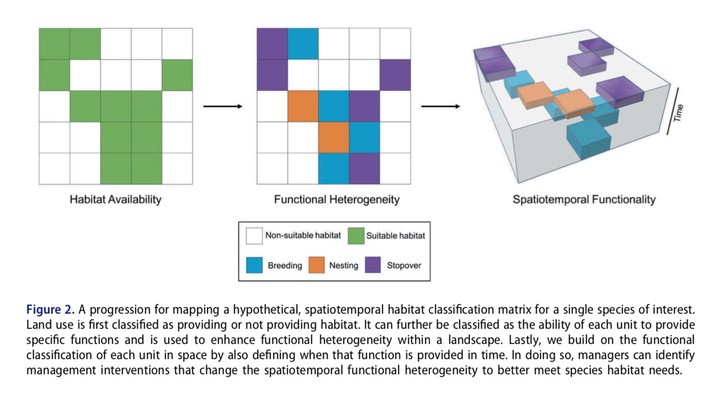Abstract
With a growing human population, we are faced with the challenge of managing limited spaces for multiple social and environmental needs. Identifying opportunities to align social and environmental needs is thus a transdisciplinary design challenge. To meet this task, we present the concept of spatiotemporal multifunctionality (i.e. the provisioning of more than one human or environmental function in a given place at different times) and demonstrate how integrating principles of landscape ecology, social-ecological systems, and land system architecture enables a dynamic approach to landscape design and planning. Such an integration is capable of providing conservation tools for diverse social-ecological systems to maximize spatiotemporal multifunctionality. We use migratory birds as a working example to present a dynamic conservation opportunity and related challenges. By adding a temporal component to land-use classification in areas of high human use, we demonstrate the potential to enhance land-system sustainability and promote human-wildlife coexistence in a changing world.
